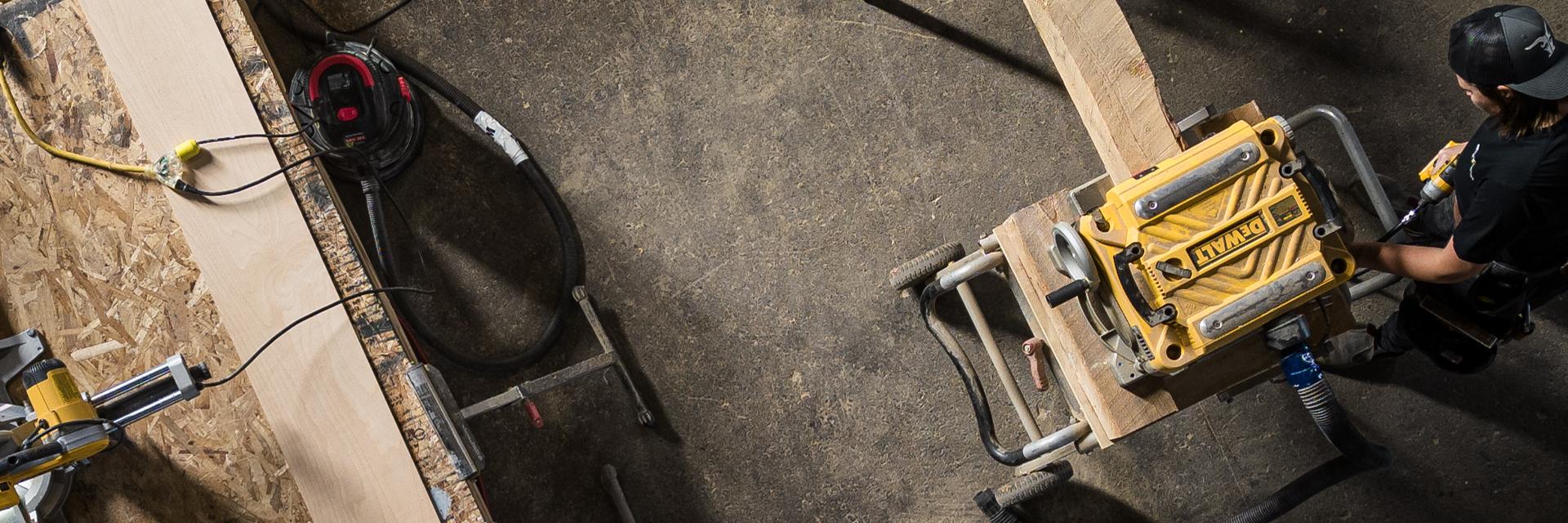Lloyoll Prefabs: Building modern masterpieces on Nova Scotia's South Shore
Thursday, October 12, 2023
There is something particularly beautiful being crafted in the small village of Brooklyn on Nova Scotia’s South Shore. Recently gracing the cover of House Beautiful magazine, it’s being described as a “modern masterpiece.”
While commonly referred to as “tiny homes,” Jonathan Lloy, president of Lloyoll Prefabs, prefers the term “micro dwelling.” Along with the preferred naming convention, Lloyoll Prefabs will likely challenge every conception you’ve ever had about tiny homes and prefabs. And the world is taking notice with Lloyoll’s first international delivery to North Carolina — a sale that originated from an internet search.
“They just googled us and fell in love with the brand and the design. Oddly enough, we haven't targeted North Carolina. There's been no specific campaign,” explains Lloy. “We realize we're in an emerging niche in the modular end of the residential construction industry, and we've just focused on branding so we could build trust and people from far away would consider us a legitimate option.”
In other words, Lloyoll is a company primed not just for exporting, but for internationally shipping four-season, fully code-compliant homes amidst the backdrop of a global housing crisis and runaway inflation. And they can deliver these neighbour-envy-inducing, energy efficient dwellings six months from an order date.
Lessons learned
To be fair, Lloyoll Prefabs wasn’t born global. It wasn’t even born prefabricated. A custom contractor by trade, Lloy cut his teeth in Western Canada doing timber framing for large custom homes. The circumstances of a small shop, a growing business, and an ever-increasing awareness of how much more could be accomplished indoors at a lower risk level pushed the company towards a modular building approach.
“When Lloyoll Custom Building was a sole proprietorship 20 years ago, the shop was so tiny we couldn't assemble the pieces. We would do all the joinery theoretically, and then do our first dry run onsite, so it had to work.”
“I realized how much you could optimize your workday indoors versus all the on-site variables. Even as we were getting into bigger custom homes, we were still doing as much as we could in the shop. After Caralee joined the business as vice president and we came back to the East Coast where I’m from originally, we were offering design build services. Then we were building wall panels in our shop. So instead of showing up and putting pieces together – like, sticks together – we would show up and put big components together, so 8,000 sf buildings were being erected in a week and a half.”
“We were really speeding up turnover times. The more we did in the shop, the more we wanted to do in the shop, so we've kind of progressed from building components in the shop. During the winter of 2015/2016, we undertook to write our quality program manual to build entire homes in the shop, and we haven't looked back since then. Now we focus exclusively on modular.”
Brand inspiration
While focus is good, prefabricated housing is not new or unique.
What is new and unique is how laser focused Lloyoll is on brand building and how well they are doing it. From the website to the Brooklyn office and shop, every touchpoint is meticulously thought through and well executed, reflecting the company’s commitment to design and craftsmanship. Uniquely, the brand embodies the influences of Japanese, East Coast and Scandinavian architecture.
“We've been fortunate enough to work with excellent architects from coast to coast. If you look around my office, you're going to see Shou Sugi Ban treatment on the beams, which is an old Japanese practice. And the joinery - we associate a lot of this joinery with the Rocky Mountains, but most of it came from Japan originally.”
“We have icons right here on the East Coast like Brian MacKay-Lyons and we've also been influenced by Frank Lloyd Wright in the way he uses natural products and brings natural light into the homes.”
It’s the influence of Scandinavian architecture that is driving the success of the actual modular design and functionality of Loyoll homes.
“Scandinavian architecture is not just beautiful, it’s incredibly pragmatic. Modular must be pragmatic, so you have to offer all this detail, all this interest, all this great architecture – but you must be able to ship it and it must go together sleek and smooth onsite. Scandinavian architecture lends itself to all of that. Our paneling is so robust it withstands travel, changes in temperature and humidity swings.”
“Basically, we poached off the best strategies we saw in practice all over the country. We want all those influences to be reflected in our brand and home designs. It’s who we are.”
Digital difference
Another key differentiator for Lloyoll – one that Invest Nova Scotia was able to help support through the Export Development Program – is a navigation item on the Lloyoll website, the Build & Price button. This tool allows potential buyers to completely “build and price” an entire home online.
“There's no one out there offering a build-and-price tool, including delivery for modulars. And ours is really, really accurate. Our website was our first real step in selling direct to user. We were lucky. We started that before COVID, and during COVID we had an online platform where you could explore, build, price your home and order it, and we sold 10 homes in about a month in the spring of 2020. It was just an absolute explosion of interest.”
A smart approach and a lot of perseverance is working for Lloyoll. They are being recognized globally and selling to an international market. But they know there is still a lot of work to be done to successfully export to new markets – both from a sales and a logistics angle.
“Now that we've sold a home in North Carolina, we better understand just how much work it is. They have different building codes and processes, and we must prove compliance. Now that we’ve gone through that process, we will market in North Carolina, because it's going to be cheaper for us to sell a house in North Carolina than it is in New Hampshire”
“Each time you get a product into that area, it opens up so many doors, but you need that first client who’s willing to take on that risk and partner with you on that project.”
“We are fielding a lot of inquiries from the United States. We need to continue to focus on strategy, which we are. This North Carolina project was critical to us in understanding how to navigate that and it'll be different each time we enter a different area. But there'll be rules we can follow and some templates we can use now to at least circumvent some of the back and forth that we've had.”
Riding the wave
It's worth mentioning again that all of this is being accomplished in Brooklyn, Nova Scotia, population 849. While it may have been Caralee’s love of surfing that led the founders to Nova Scotia, doing business in a rural location presents its own set of circumstances, some more challenging than others.
“We came here because we were drawn to the beaches, the ocean and the wilderness. Living somewhere this beautiful, but this rural at the same time, and wanting to do new things demands strategy. The biggest market around here is renovations. It's a great market with lots of opportunity, but we wanted to create. We realized we needed a bigger market geographically, so we needed a product that we could ship out of here. That's how we ended up in the export end of our industry.”
“Here on the South Shore, small groups take on entire projects, so you don't get the ability to organize specialty trades. Each little core is its own complete ecosystem when it comes to a project. Sometimes the carpenter will drywall and do the cabinetry and tile. It took me a little while to get used to that, but I've ended up embracing it and we've been developing specialities within our own company, because we needed to. It's made us strong that way. During COVID, some of our supply chains were so weakened that we bought some of our own equipment to mill flooring and siding.”
When asked what is next, Lloy does not veer from the strategy or focus that resulted in his home being lauded as a modern masterpiece in the “oldest continually-published shelter magazine in the United States.”
“We have such a great team. I can focus my energies between advancing design and the technology that we are going to build inherent to scaling the company. We have proven we're good at executing and delivering details and getting it across the finish line, which is rare in our industry. We've demonstrated we can offer an online build-and-price tool that will give people an accurate delivery cost, which is also very rare.”
“Today, we want to focus on simplifying the construction details while preserving the architectural details and quality so that we can take all of this and scale it up.”







